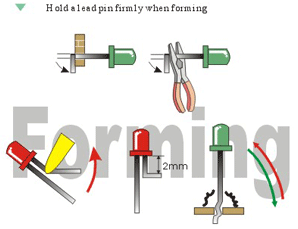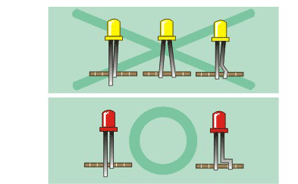Technical
support
Gerneral Information | Application note | ABSOLUTE MAXIMUM RATINGS | CHARACTERISTICS CURVES | LED Knowledge | LED part No system | LED application Guide
HOW TO USE LED
·FORMING:
Please do not form the LED after soldering .If forming id necessary ,it must be done before soldering .
Any unsuitable stress applied to the epoxy may break bonding wires in LED.
·SOLDERING:
Soldering Bath ---260℃±5 ℃ within 5 seconds: Soldering Iron-Under 30W within 5 seconds.(1.6mm from epoxy body)
Do not apply any force of mechanical stress onto the leads or epoxy body during soldering heat is remained.
If soldering one line of LED on a P.C . board by using a soldering iron ,don t solder both the leads of the LED at same time .
·CLEANING:
Use Alcohol ,Freon TE or Chlorosen to clean LED at normal temperature for less than l minute .
Do not use unspecified chemical liquid because it may cause crack or haze on the epoxy body.
·PREVENTING OVER CURRENT :
In order to operate LED in stable condition , please put protective resistors in series.
Resistor value can be determined by the formula
R= WHERE:
Vs=Source Voltage
VF=Forward Voltage
If=Recommended Current of LED (10-20mA)
·BRIGHTNESS:
For the purpose of obtaining uniform brightness, LED shall be same current.
It is useful for uniform brightness if you use larger source voltage and protective resistor .
Cleaning 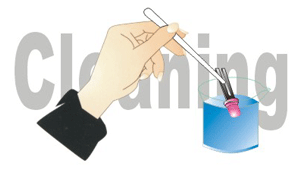
|
|
Forming
|
|
Soldering
|
|
| ABSOLUTE MAXIMUM RATINGS (TA=25oC) |
If | Pd | Vr | IPF | TOPR | TSTG | TSOL |
| mA | mW | V | mA | oC | oC | oC | |
| H | 25 | 60 | 5 | 150 | -40 to +80 | -40 to +85 | Max.260±5℃ for 3 sec Max. (1.6mm from the base of the epoxy bulb) |
| E | 25 | 60 | 5 | 150 | |||
| Y | 25 | 60 | 5 | 150 | |||
| G | 30 | 65 | 5 | 150 | |||
| SR |
25 | 60 | 5 | 150 | |||
| LR | 25 | 50 | 5 | 150 | |||
| UR | 25 | 60 | 5 | 150 | |||
| UE | 30 | 65 | 5 | 150 | |||
| UY | 30 | 65 | 5 | 150 | |||
| UG | 30 | 75 | 5 | 150 | |||
| PG | 30 | 110 | 5 | 150 | |||
| BG | 30 | 110 | 5 | 150 | |||
| B | 30 | 120 | 5 | 100 | |||
| UB | 30 | 120 | 5 | 100 | |||
| UV | 30 | 120 | 5 | 100 | |||
| W | 30 | 120 | 5 | 100 | |||
| W | 30 | 120 | 5 | 100 |
Parameter
Forward Current IF
Power Dissipation Pd
Reverse Voltage VR
Peak Forward Current IPF (Duty 1/10 @1KHZ)
Operation Temperature TOPR
Storage Temperature TSTG
Lead Soldering Temperature TSOL
| Wavelength(nm) | RELATIVE INTENSITY Vs WAVELENGTH (λP) |
| 1 655nm/Red 2 568nm/Yellow Green 3 585nm/Yellow 4 635nm/Orange 5 700nm/Bright Red |
6 660nm/super Red 8 610nm/Amper 9 GaAIAS 880nm 10 GaAS/GaAS & GaAIAS/GaAS 940nm A 430nm/Blue, 470nm/Blue |
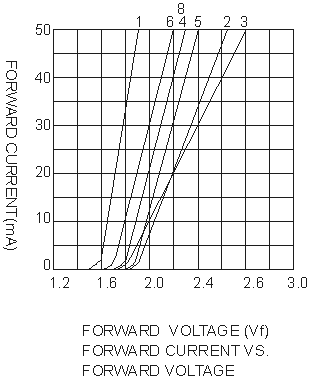 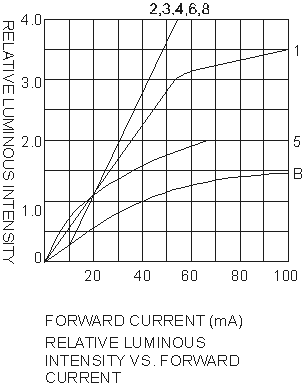 |
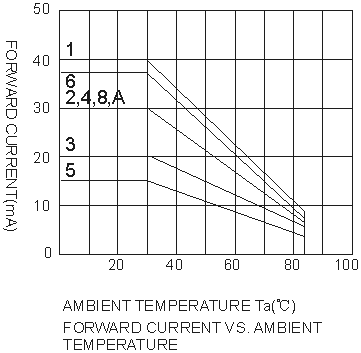 |
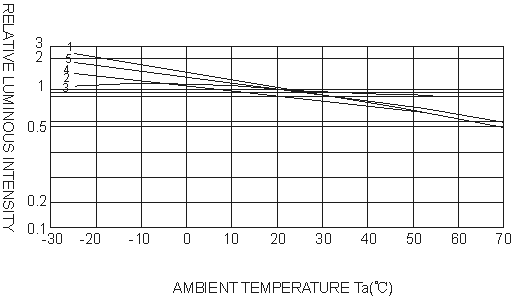 |
LED
PRODUCT
overview
- Blue LED 7 Segment
- 1 digit | 2 digit | 3 digit | 4 digit
- White LED 7 Segment
- 1 digit | 2 digit | 3 digit | 4 digit
- Blue LED dot matrix
- 8*8 series| 5*7 series | 5*8 series | 5*9 series
- White LED dot matrix
- 8*8 series| 5*7 series | 5*8 series | 5*9 series
- Blue LEDs
- 3mm,5mm, 8mm, 10mm round; Oval type: Piranha led; SMD; high power LEDs
- White LEDs
- 3mm,5mm, 8mm, 10mm round; Oval type: Piranha led; SMD; high power LEDs

LEDs
save energy
- History
- Discovery
- Practical use
- Development
- Technology
- Physics
- Efficiency
- Lifetime
- Color and Material
- UV and Blue
- White ( RGB | Phosphor)
- OLEDs
- Quantum dot LEDs
- Kinds
- Miniature
- High power
- Application-specific
- Considerations for use
- Power sources
- Electrical Polarity
- Advantages
- Disadvantages
- LED application
- Indicators and Signs
- Lighting
- Smart Lighting
- Non-visual application
- Machine vision


